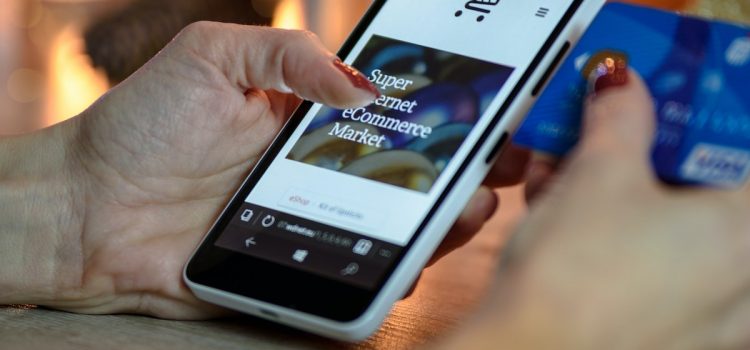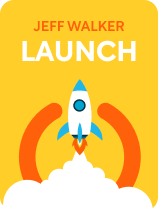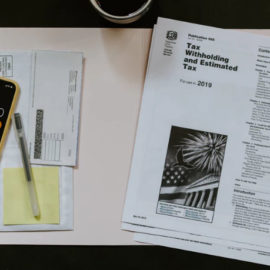

This article is an excerpt from the Shortform book guide to "Launch" by Jeff Walker. Shortform has the world's best summaries and analyses of books you should be reading.
Like this article? Sign up for a free trial here.
How can you take advantage of the mental triggers of your prospective customers? What’s a “squeeze page”? How should you follow up with people who didn’t buy your product?
In this digital age, when nearly anyone can start a business online, it can be difficult to stand out. In Launch, marketing expert Jeff Walker offers a product launch event strategy that will help you market and sell a product with little to no start-up costs.
Continue reading to learn how to stage a successful product launch event, step by step.
Product Launch Event
When starting a business, people often invest great effort into creating a product, put it on the market, and simply hope that others will buy it. Walker’s strategy is to take the reverse approach. He insists that cultivating interested buyers before releasing the product is the key to a successful launch.
At its simplest, a product launch is the process of introducing and selling a new product to potential customers. This product might be something physical, like handcrafted pottery, or something informational, like online baking courses.
According to Walker, the Internet has both advantages and challenges when it comes to launching a product. On one hand, it allows you to reach people across the world within minutes and at little to no cost, creating a low barrier to starting your business and more opportunities to take advantage of. On the other hand, these attractive qualities lead to greater competition, which can make it harder to stand out. Additionally, online review platforms and customer ratings provide more transparency, dissipating the “smoke and mirrors” of clever sales talk. Because of these unique advantages and challenges, Walker insists that, to achieve success through Internet marketing, you must depart from traditional marketing approaches and embrace a launch strategy focused on customer engagement.
(Shortform note: In All Marketers Are Liars, Seth Godin echoes Walker’s approach of focusing on your customer first before thinking of how to sell your product. He explains that older tactics focused on lowering production costs to increase profits. However, in the Internet marketplace, hoping your product sells just because it meets your market’s needs no longer works because there are so many competitive options available. To appeal to potential customers, Godin suggests you market your product by telling a powerful story. You can do this by appealing to their values and emotions.)
3 Keys to a Successful Launch
To stand out in this digital marketing arena, Walker suggests you take advantage of mental triggers—brain shortcuts that influence people to do certain things—in your product launch. These triggers support three key factors of a successful launch: value, relationships, and desire. By integrating all three, you can ensure that your launch will gain traction and responsiveness.
| Heuristics: Mental Shortcuts Can Help Market Your Product What Walker refers to as “mental triggers,” psychologists call heuristics. Heuristics are mental shortcuts that help us navigate the world and make decisions quickly and efficiently. While consumer demands and marketing techniques are constantly changing, these mental habits remain effective because they are grounded in human psychology. Here are some to keep in mind when following Walker’s launch approach: Availability—We tend to make decisions based on the first information or visuals that come to mind when we think of something. By planting a good image of your product in your customer’s minds, you’re increasing the “value” factor of your product launch. For example, if you’re teaching gardening classes, you want your customer to picture their backyard transformed into a beautiful garden whenever they come across your marketing. Representativeness—This heuristic explains our tendency to judge things based on a mental stereotype we already have. For example, when you imagine a gardener, you might picture an older woman living an unhurried life, despite this representing only one of many types of people who enjoy gardening. When trying to build value and desire during your launch process (we’ll discuss this process shortly), try thinking of what other images or values you want your product to be associated with, and how you’ll subvert your prospective customers’ stereotypes. Loss Aversion—This heuristic explains that people are motivated more by the fear of losing things than the hope of gaining things. Once someone owns something, they naturally value it more simply because it’s theirs. How could this apply to your product launch? When you give out free samples, customers will appreciate you and your product more because they own it. And once they own it, they likely won’t want to lose it, meaning you’ve potentially earned a lifelong customer. |
Key #1: Build Value
When you give value before mentioning sales, people will be more eager to purchase your product down the line. When you focus on value first, the sales will come naturally.
How does this work? When you provide value free of charge, you’re establishing trust and authoritativeness. Even just by giving quality information—a tip or trick—you’re giving people a taste of what your product or service will be, as well as your expertise. When you’re generous with free content, people will appreciate you and feel more inclined to reciprocate by buying your product.
Key #2: Build Relationships
Walker writes that, to launch a product successfully, you must forge strong relationships with your buyers and potential customers. When you do this, you’ll be more memorable than just loud and stand out from your competitors. One way to build these relationships is to pace your launch over the course of several days or even weeks.
Additionally, a spaced-out launch creates room for conversations to flow and communities to form. When you build a community around your product, you form not only robust relationships with your customers but also connections between your buyers themselves, which generates more momentum in your launch. Walker says this works because of social proof.
Key #3: Build Desire
Just like an advent calendar to Christmas, turn your product launch into a countdown that generates excitement that will unleash on your launch day. Walker reasons that this approach activates people’s natural desire to be a part of something bigger.
Your launch must have an endpoint. By having a definite window, you create an urgency to buy your product. When things are limited, people feel more hastened to make a decision.
To make your product launch an event, approach your product launch in five stages: 1) Create an email list, 2) gauge the interest of prospective customers, 3) build anticipation, 4) open for sales, and 5) follow up with buyers and non-buyers.
Launch Stage 1: Create an Email List
Walker says that creating and growing an email list is the first step to a successful launch. To start building an email list, Walker suggests you:
1) Develop your promise. In other words, figure out the core reason people should subscribe to your list. To do this, consider something free and valuable that you can offer through email.
2) Identify your target market. Walker suggests looking for a specific group of people whose needs or wants could be met by your product. Examine the demographics to get a better sense of how to market to them.
3) Create a “squeeze page”—a landing page on your website that gives visitors the choice to either subscribe to the email list or leave. Walker states that, even if a majority of people leave without signing up, having a small group of responsive followers you can keep in contact with is better than having many contacts who rarely open your emails.
4) Encourage people to subscribe with an enticing offer. Give people an immediate incentive to sign up. This should be something free and specific.
Walker suggests three methods of promoting traffic to your page: organic traffic, social media, and paid advertising.
Launch Stage 2: Gauge Interest
Send a simple email to your followers telling them about the product you’re planning to launch. Walker suggests directly asking for feedback and questions through a survey with questions. Take note of their receptivity to your offer as well as any objections. By asking your prospective customers what they’re looking for, you can modify your product to meet their needs and increase their interest in buying. You’re re-engaging your loyal followers and kindling relationships with new ones.
Afterward, write another email thanking people for their input and providing a progress update. Maintain steady communication with your list.
Launch Stage 3: Build Anticipation
Walker explains that people are drawn to sequences and stories. He suggests sharing three marketing pieces (email, video, social media post, etc.) over the course of five to twelve days. Walker recommends you give your target market the answers to three questions: Why they should buy your product, what your product is, and how it will benefit them.
Then, answer any major questions you’ve received from your feedback requests. After that, transition into discussing your offer and the logistics of how your followers can finally attain your product (and its benefits) for themselves.
Launch Stage 4: Open to Sales
Next, create a sales page on your website with a video or letter summarizing your offer while emphasizing how buyers will benefit from it. Then, send a short email with a link to your sales page announcing that your product is available for purchase. For better results, communicate regularly with your followers.
Again, Walker stresses that you should have a definitive end to your launch to capitalize on people’s sense of scarcity.
Launch Stage 5: Follow Up
Walker notes that people often feel underwhelmed after purchasing a product. To address this, continue to communicate and deliver more than what they had expected. For the buyers, giving a bonus gift conveys your gratitude for their support, and asking for feedback fortifies your connection. For the non-buyers, giving them more content and asking for feedback offers you insights as to how to win them over for future launches.

———End of Preview———
Like what you just read? Read the rest of the world's best book summary and analysis of Jeff Walker's "Launch" at Shortform.
Here's what you'll find in our full Launch summary:
- How to stand out in an age when anyone can start a business online
- How you can market and sell a product with little to no start-up costs
- Why you should start an email list before you even launch your product






